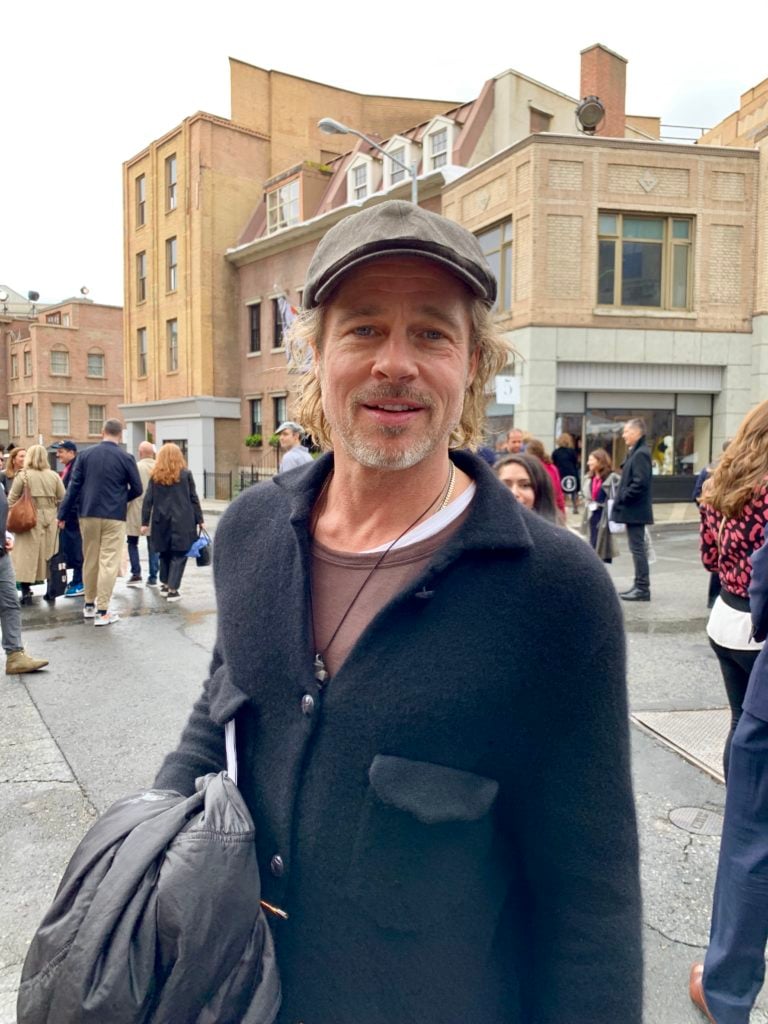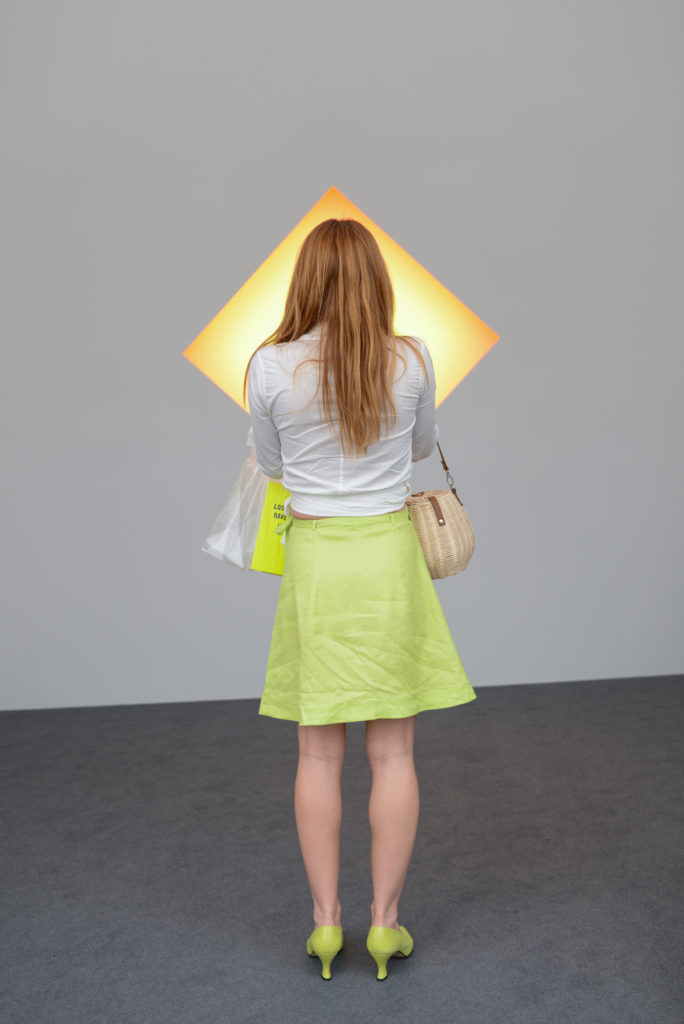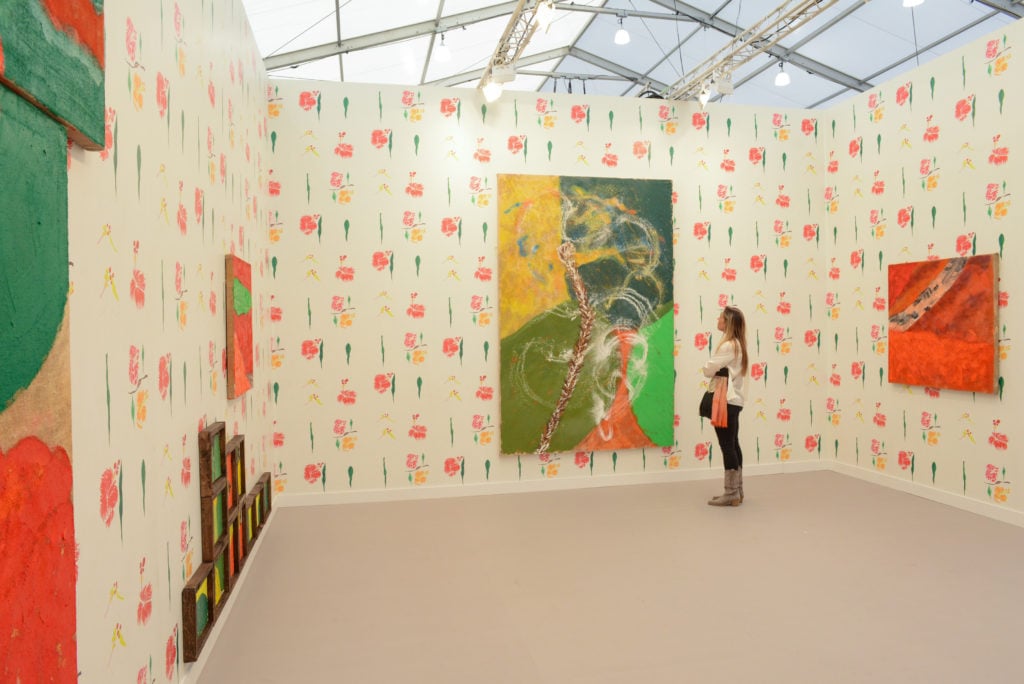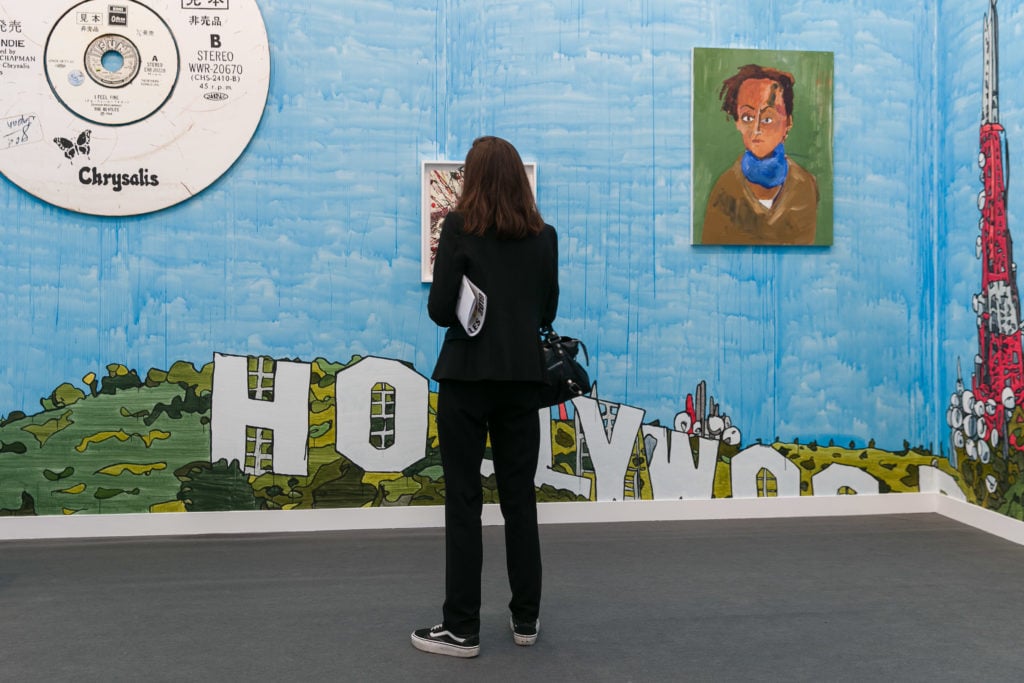Every Monday morning, Artnet News brings you The Gray Market. The column decodes important stories from the previous week—and offers unparalleled insight into the inner workings of the art industry in the process.
This week, reaching across the aisle…
THAT’S ALL, FOLKS
Last Thursday, Warner Bros. announced that it would break from its Hollywood rivals by enabling home viewers to stream all 17 new movies it plans to release in 2021 on the same day each film premieres in theaters worldwide. On one level, the decision represents a multi hundred-million-dollar bet against the viability of large gatherings next year—a bet that should chasten anyone in the art market expecting to return to the old in-person global-events circuit anytime soon. But on another level, it also stems from strategic differences between cultural sectors that should actually give art professionals reason to take heart.
Warner’s move shatters a longtime industry standard: the 90-day window during which the major studios historically agreed to screen their new releases only at multiplexes. Although there have been a handful of exceptions during this locked-down year, Hollywood and theater-owners seemed to have joined hands around the notion that any studio making its entire slate streamable immediately would be pouring poison in the punch bowl for all sides of the industry.
Then Warner went rogue. Crucially, it did so by going vertical with its distribution. Rather than giving multiple on-demand platforms access to its upcoming releases (including such IMAX-worthy potential blockbusters as Godzilla vs. Kong, The Matrix 4, and a new adaptation of Dune), the studio confirmed that its slate would only be available to subscribers to HBO Max—which, like Warner Bros. and all other WarnerMedia entities, is owned by telecom colossus AT&T.
So what changed? And how much should the art world care? I think those questions have three intertwined answers…

Brad Pitt at Frieze LA. Photo by Sarah Cascone.
COMING SOON(?)
Part of Warner’s radical pivot was motivated by public-health pessimism. Toby Emmerich, the chairman of Warner Bros. Pictures Group, stated in an interview with the New York Times that it was “not clear that full normal will return even well into the fourth quarter of next year.” If he’s right, the studio’s new strategy will at least prevent it from hemorrhaging cash to reschedule and re-market its new releases mid-year (again) because would-be theater-goers aren’t willing or able to risk life and limb for the Space Jam sequel.
As regular readers of this column already know, I’m sympathetic to Emmerich’s suggestion that we pump the brakes on our expectations of how quickly we in the arts can emerge from the social-distancing era. Yes, vaccines are on the horizon. But Pfizer and Moderna’s versions require two doses and ultra-cold temperatures; even simpler options would demand an unprecedented upscaling of the global supply chain and a citizenry willing to be inoculated at a 60 percent to 70 percent clip.
I regret to inform you that the US is currently short of that statistical threshold based on a mid-November Gallup poll (and that’s before factoring in what the presidential election just re-taught us about the existential crisis of polling). If that weren’t enough, IBM cybersecurity experts also relayed last week that international hackers were threatening the “cold chain” needed to keep the vaccines stable in transit, as well as that this “precision targeting of executives and key global organizations hold[s] the potential hallmarks of nation-state tradecraft.” Hooray!
I’m not saying the art market should abandon all hope for large-scale in-person events in 2021. The industry’s wealth and concentration in major cities give it an advantage over the general populace. I’m just saying that my estimate for the return of “full normal,” at least here in the US, is closer to Emmerich’s than an optimist’s.
At the same time, it’s vital to acknowledge that Warner’s 2021 pivot also stems from fundamentally different circumstances than those facing Art Basel, Larry Gagosian, or your friendly neighborhood artist-run project space—and that the past 11 months have made that fact clearer than ever.

A viewer looks at one of James Turrell’s works in Los Angeles. Photo: Courtesy of Frieze.
THE PARENT TRAP
Aside from public health, there are two main forces driving Warner’s cineplex-agnostic approach to next year. Neither applies to the business of art. For once, that’s a great thing for our niche industry.
The first of those forces concerns the studio itself—or more accurately, its parent company. (Note: If you don’t care about media-conglomerate economics, skip to the next sub-headline.) Despite Warner’s justifiably cautious timeline for a carefree return to theater-going, immediately pushing its 2021 slate onto HBO Max is also an attempt to juice the dismal performance of the AT&T-owned streaming platform, which was launched earlier this year to compete with the near-infinite library and cultural ubiquity of Netflix.
The Times reports that HBO Max—currently available only in the US, as of my writing—counts only 8.6 million active subscribers to date. For comparison, in its most recent quarterly results, Netflix boasted over 73 million subscribers in the US and more than 195 million worldwide. Disney+, the streaming service debuted by the kingdom of Mickey in November 2019, has amassed nearly 74 million subscribers, with plans to poke its mouse ears into the Asia-Pacific region in the coming months.
That sound you hear is the agonized groan of Warner’s male execs being kicked squarely in what an exchange student in my high school once referred to as “the men’s department.”
Why are HBO Max’s results so anemic? Analysts point to an unnecessary distribution bottleneck and consumer confusion about the service’s offerings. HBO Max only became accessible to the 40 million Americans streaming through Amazon Fire TV devices less than three weeks before Warner’s disruptive announcement. Right now, it’s still unavailable to the 46 million Americans using hardware from Roku.
As for what subscribers can watch on the service, HBO Max’s supposed value proposition actually undercuts its namesake’s well-earned identity as an exclusive purveyor of high-quality film and TV. Although HBO Max includes a few premium series and films produced exclusively for the platform, it largely bulked up a lean library of HBO delicacies by slopping on loads of Warner-controlled mass-market content like The Big Bang Theory and Friends. The result has been what business analyst Scott Galloway called “the biggest strategy/brand f*ckup of 2020.”
Warner’s streaming-first 2021 release schedule aims to rescue HBO Max from this mess. The plan will make each of the 17 Warner Bros. films available there for one month, starting the same day it debuts in physical theaters. After that, the movies go back behind the 90-day window customarily separating theatrical releases from on-demand access. The gambit is that the strategy will compel even viewers only interested in the new blockbusters to become HBO Max subscribers, allowing Warner to offset its short-term losses in multiplexes with long-term recurring revenue from home audiences.
In short, the art world has nothing to fear on this front. Which leads us to…

Frieze Los Angeles held its VIP opening on Thursday, February 13, 2020 in the Paramount Pictures Studios in Hollywood. Photograph by Casey Kelbaugh
THE BIGGER PICTURE
The second force at play in Warner’s 2021 release strategy concerns Hollywood’s place in pop culture today. While this dilemma contends with some of the same dynamics the art market faces, this year’s crisis has cemented that the two audiences are reaching opposite conclusions about how they prefer to consume each art form.
Any film critic or cultural observer with a shred of awareness knows the average American has been gravitating further and further toward home viewing since the advent of “prestige TV” in the late 1990s (largely courtesy of HBO classics like The Sopranos and Deadwood). Despite the consistently gaudy grosses of blockbuster franchises usually about superheroes, feature films have found themselves another mile away from the pop-cultural center each year.
Even prior to 2020, everything from improved consumer technology, to an ever-expanding bounty of streamable content, to skyrocketing ticket prices at theaters meant that even movie viewers were most often queuing up a selection on their own flat screen, computer monitor, or smartphone (sorry, David Lynch) instead of heading to a multiplex.
In this context, Warner’s straight-to-HBO Max strategy is just a grudging acknowledgement of the preferences that have been unmistakable for years. It’s also why no one really believes the studio execs claiming it’s only a “unique, one-year plan.”
Where does this leave the in-theater experience? The best projection I’ve heard comes from film critic Sean Fennessey, who speculated after the Warner announcement that movie theaters are destined to become what jazz clubs are today: enduring gathering places for small groups of self-selecting die-hards… and inconsequential relics to mainstream consumers of the larger art form.
If nothing else, 2020 has been proof positive that physical galleries and art fairs will not suffer a similar decline. True, the people driving these businesses have always been a niche faction, meaning visual art has no kung-fu grip on the mass market to lose.
But more than that, the art world’s historic push online amid this year’s shutdowns has left most art sellers, collectors, and other professionals desperate for the real thing. Yes, hybrid “bricks and clicks” strategies hold potential to meaningfully improve the trade, but the revolution will not be (fully) digitized. The business, the in-person experience, and the surrounding social fabric of art are sewn together too sturdily for at-home options to suffocate the traditional approach. If you don’t buy that, I’d recommend checking out what just happened on the ground at Zombie Art Basel Miami Beach last week.
So while the art world should take note of the many hurdles still remaining before we can resume normal life, this year has also taught us that, unlike in Hollywood, the physical experience still reigns supreme for the foreseeable future. Cozy up to that reality while you’re whiling away the hours with a newly robust HBO Max subscription this winter.
[The New York Times]
That’s all for this week. ‘Til next time, remember: the show must go on, but that doesn’t mean it will stay exactly the same.
Follow Artnet News on Facebook:
Want to stay ahead of the art world? Subscribe to our newsletter to get the breaking news, eye-opening interviews, and incisive critical takes that drive the conversation forward.








